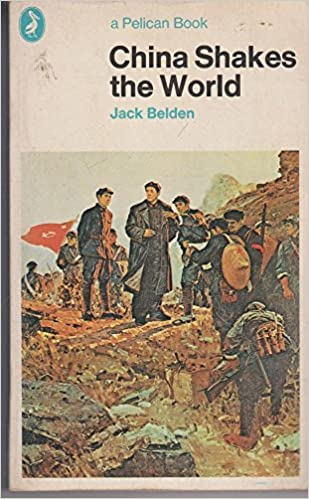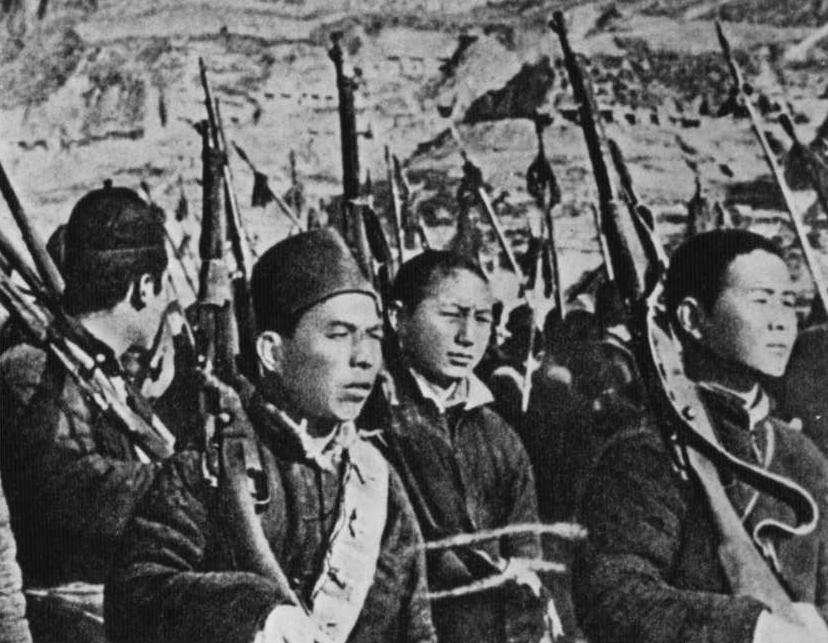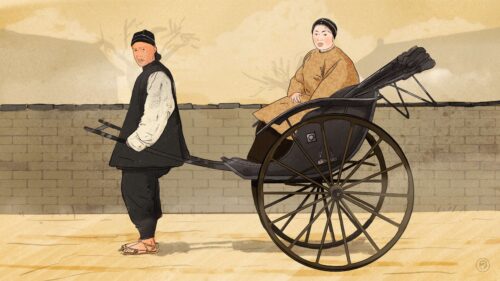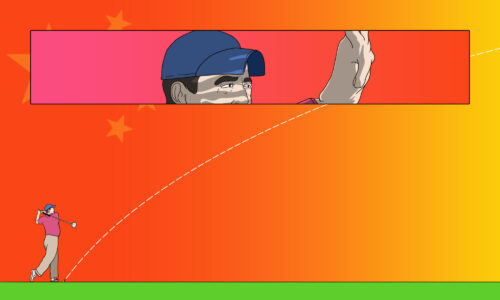This is book No. 14 in Paul French’s Ultimate China Bookshelf.

Blurbs:
“Belden’s no-holds-barred reporting on the Chinese revolution, from ‘bruised and beaten girls, forced marriages, kidnapped wives, bedroom politics…the revolt of women is something to read.’ For anyone but firm partisans of Chiang Kai-shek.”
—Star Tribune (Minneapolis)
“In the author’s opinion China has been over-ripe for a social revolution for more than a hundred years, and only foreign imperialism has prevented it. Now, with the nation on its own, the communists have been able to capitalize on a situation made to order for them.”
—The Kansas City Star
“I strongly recommend your attention be turned to the newly published book by Jack Belden entitled ‘China Shakes the World.’ Mr. Belden…is one who surely has no taste for the ‘beauties of communism’ nor is he entirely convinced that Chiang Kai-shek’s China is a democracy.”
—The Evening Sun (Baltimore)
“Mr. Belden’s background and his extensive experience as a reporter in the Orient make him particularly well qualified to describe and interpret what has happened in China in the last few years. This book should not be missed. China, with its 450,000,000 people, is going to be a powerful force in our world in the near future. For those who wish to be well-informed, this book is an excellent place to start.”
—The Boston Globe
About the author:
Brooklynite Jack Belden (1910-1989) graduated from Colgate University into the Great Depression. He found work as a merchant seaman and, in 1933, jumped ship in Shanghai. He learned Chinese, worked on local Shanghai papers, and then became the United Press’s correspondent in the city. In 1942, he was the only reporter who remained with Joseph “Vinegar Joe” Stilwell in Burma retreating to India. He later wrote Retreat With Stilwell (1943). He was eventually forced to leave China by the Japanese invasion and covered the war in North Africa and Europe working for Time and Life magazines and covering the Sicily landings. Belden retuned to China in 1947 and eventually wrote China Shakes the World. After the book came out he largely retreated from public life, married, had children, and worked a variety of mundane jobs, from school janitor to bus driver. Split from his wife, he lived with his mother in New Jersey. He eventually left America for Paris, where he died in 1989, sadly largely forgotten.
The book in 150 words:
The American reading public was already familiar with Jack Belden when China Shakes the World appeared in bookshops — his Retreat with Stilwell and Still Time to Die had been strong wartime sellers. But his sympathetic on-the-ground reporting from the “liberated areas” of China under Communist Party control were revelatory to many. He also then showed the opposing view in the areas where the Nationalists were still in control, though losing ground steadily. Belden spends his time with the army, the guerrillas, the peasantry, and tells their stories in terms of personal experience and human anecdotes. He is clear that the Party, whatever its level of popularity, is not controlled by Moscow.
Your free takeaways:
The change in mass consciousness did not take place in any serene and academic atmosphere, but in one highly charged with emotion. Between 1945 and 1949, it was emotion that played the principle role in China’s civil war. that this emotion was produced by previously existing external conditions, the writer does not deny. But it was only when the passions of the Chinese people burst their old confining fetters and in turn reacted on the objective conditions of Chinese society that the Communists and their allies were able to ride to power.
Nevertheless, the Communist program did alienate some of the poor peasants, the tenants and the long term workers. From bitter experience the peasant had learned to distrust any intellectual who came to his village with fine promises. Only if you gave him land did the poor peasant think you meant business.
It makes little difference that the Communists may be reforming the relations between the sexes as a means of obtaining power. Their sincerity is of no import at all. The fact remains they have given women a goal toward which they can fight.
The Communists pulled down the proud and raised up the humble. They freed women from man, the child from the father, the tenant from the landlord. They interfered in every form of private life and burst into a world from which Chiang Kai-shek had been excluded. And from this world they took out the cadres and the resources necessary to erect their power.
Why this book should be on your China bookshelf:
China Shakes the World was published in 1949. Though often ranked with Edgar Snow’s Red Star Over China, Graham Peck’s Two Kinds of Time (book No. 3 on our Ultimate China Bookshelf), and Teddy White and Annalee Jacoby’s wartime Thunder Out of China, Belden is a little different in several very crucial ways. For a start, he resisted the siren song of the communist wartime encampment at Yan’an and Mao. Belden described it all as a “circus” and a “tourist center,” which indeed it was, or something akin to it, with every journalist and their best friend trooping up to see the communists in their caves waltzing, theorizing, and keeping their powder dry.
So Belden headed into the countryside and the villages. His China Shakes the World is classic on-the-ground reporting, revealing that the Communist-dominated Border Region Government did indeed have the allegiance of local leaders (some other Western sources refused to believe this at the time). His descriptions of the village characters are extremely vivid. The book was generally praised for the high profile it gave to Chinese women — both the indignities suffered under more feudal times and their role in forging a vision of a “new China” under the communists.
Just as last week’s entrant on our shelf, James Kynge’s China Shakes the World, was a scorecard on the success and unintended consequences of a quarter-century of reform and opening up, so 50-odd years before, Jack Belden’s China Shakes the World provided a scorecard on who was winning the hearts and minds of the Chinese population, particularly the majority peasant population, on the eve of the Communist takeover of Nationalist China.
A dozen years after the Japanese attack on China in 1937 was a good moment to take the pulse of the Chinese population, worn down by long years of conflict, disasters, disease, Communist and Nationalist promises. A new China of some sort was coming, but what would it look like? Who would be the more appealing ideological brand? And, just like the China James Kynge described in 2006, Belden’s 1949 China would be one of advances and potential pitfalls. Both were also books written on the cusp of something new — for Kynge, the cusp of China’s emerging as a serious challenger to the role of world’s largest economy, and, for Belden, a historic shift from Chiang Kai-shek’s Nationalists to Mao’s Communists. The world was a’shakin, and China was doing much of the rattling.
Belden appears highly balanced in his assessment of the communist-held areas during the Civil War — at a village level, the arrival of a sort of inclusive democracy appears to be real change, yet the Party itself (in Belden’s view) looks destined to become despotic. He argues that the people did genuinely throng to Mao and the communists, and while the new Party power structure would improve life for China’s millions of poorest, it was also regulating a system whereby the Party would eventually simply exist for its own sake — “a new elite, a set of managers standing above the Chinese masses.” Belden, though often sympathetic, foresaw the descent into what he believed would be “outright tyranny.”
As we’ve seen before with books making bold predictions about China — from Carl Crow to Graham Peck and others — timing is everything. If Crow was writing on the eve of the Japanese invasion and Peck at the height of national unity against militarism, then Belden is in that strange post-war interregnum where the Nationalists are not able to fully reassert themselves, the Communists are slowly building their base (that will eventually triumph — though that wasn’t altogether so obvious when Belden was writing), and, frankly, the newspaper reading public around the world was tired of war and of reading about China.
This may be why Belden’s book — now considered a classic — largely failed to find a readership when it was first published. It was only in the 1960s, with interest in Mao’s China reawakened and with an introduction by Owen Lattimore (who had become the first high-profile Sinologist to fall victim to Senator Joe McCarthy), that China Shakes the World would become widely known. In the late-’60s, with many Western students intrigued by Maoism, it would be on the reading list of every China Studies course. The Pelican edition published in 1973 was a cheap, affordable paperback, and it grabbed mass attention with its color cover image of Shanghai artist (in the art section of the Political Department of the People’s Liberation Army) Peng Bin’s The Capture of Loushan Pass from the early 1970s. Finally, China Shakes the World became a bestseller, to be found in every student bedsit from London’s Notting Hill to Paris’s Left Bank to Berkeley, California.
Next time:
So perhaps it’s time to bite the bullet and tackle one of the big beasts of Chinese history — perhaps even the biggest beast of them all…Chairman Máo Zédōng 毛泽东.
Check out the other titles on Paul French’s Ultimate China Bookshelf.







